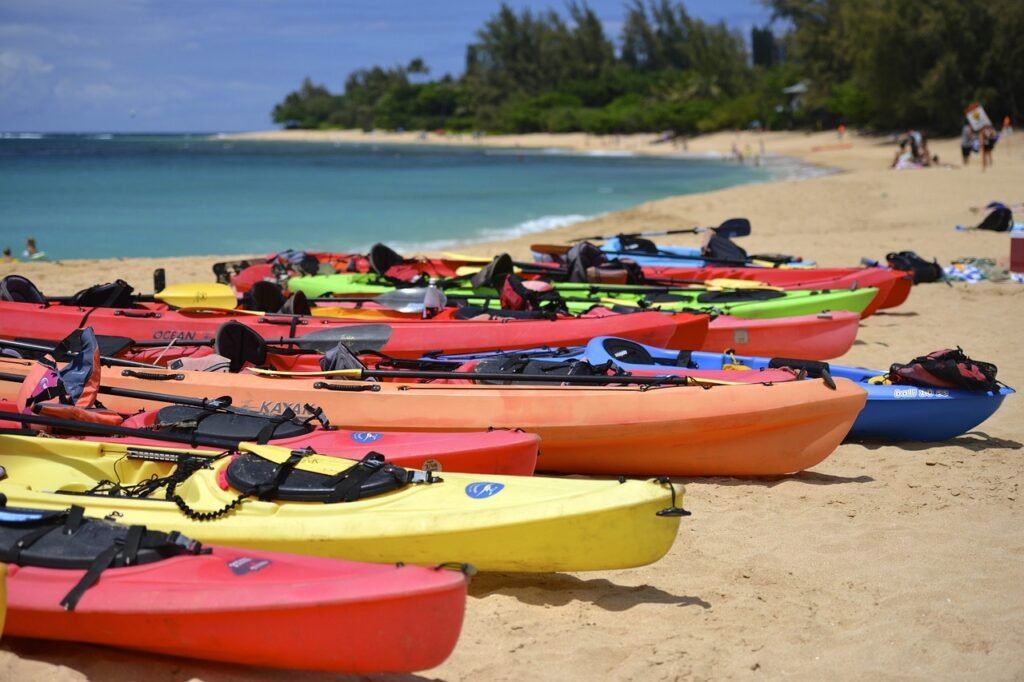When it comes to kayak fishing, mastering the art of launching and landing your kayak is essential for a safe and enjoyable experience on the water. Proper techniques not only ensure your safety but also help preserve the natural beauty of the environment. In this blog post, we will explore the importance of using the right techniques and provide you with valuable tips for selecting the right launch site, launching your kayak, navigating water conditions, landing safely, and handling challenging scenarios.
DISCLAIMER: The links I mention may be affiliate links. If you purchase through one of these links I may receive a commission, at no cost to you. As an Amazon Associate I earn from qualifying purchases.
Selecting the Right Launch Site
Choosing the right launch site is crucial for a successful kayak fishing trip. Consider the following factors when selecting your launch spot:
- Accessibility: Ensure the launch site is easily accessible and provides convenient parking facilities.
- Water Conditions: Assess the water conditions, including tides, currents, and depth, to determine if they are suitable for launching.
- Obstacles: Look out for any potential obstacles such as rocks, piers, or submerged objects that may hinder your launch.
Additionally, always prioritize safety by wearing a personal flotation device (PFD) and checking weather conditions before heading out. Consider investing in products like kayak launch wheels or kayak carts from reputable brands like Amazon, which can make transporting your kayak to the launch site a breeze.
Launching Techniques
The launching technique you use largely depends on the type of shoreline you encounter. Here are some common shoreline types and the corresponding launching methods:
- Sandy Beach: Push your kayak into the water until it is afloat, then hop in and paddle away.
- Rocky Shoreline: Use caution when launching from rocky areas as they can be slippery. Slowly lower your kayak into the water, ensuring it remains stable.
- Grassy or Muddy Shoreline: In these cases, you may need to wade into the water while holding your kayak and then carefully climb in.
For added convenience, consider using a kayak cart to easily move your kayak around and to help you launch smoothly from any type of shoreline
Navigating Water Conditions
Water conditions can vary, and it’s important to be prepared for different scenarios. Here are some tips for handling water conditions during launches:
- Windy Conditions: Launch your kayak with the wind at your back to make it easier to control your kayak’s direction.
- Strong Currents: Launching against a strong current can be challenging. Consider launching from a protected area or with the assistance of a friend.
- Surf Launching: If you’re launching through the surf, time your launch between waves and paddle vigorously to get past the break zone.
Remember to always assess the water conditions and adjust your launch technique accordingly to ensure a safe and smooth experience.
Landing Your Kayak
Landing your kayak is just as important as launching it. Follow these steps for a controlled and safe landing:
- Identify a suitable landing spot: Look for a calm area with minimal obstacles.
- Approach the landing spot: Angle your kayak towards the shore and paddle slowly towards it.
- Control your speed: Gradually reduce your speed as you approach the shoreline to avoid a sudden impact.
- Exit the kayak: Once your kayak is in shallow water, carefully step out and secure your kayak to prevent it from drifting away.
Dealing with Challenging Landing Scenarios
In some cases, you may encounter challenging landing scenarios such as strong currents, high waves, or shallow waters. Here are a few tips to help you handle these situations:
- Currents: Paddle upstream or across the current to reach a more manageable landing spot.
- Waves: Time your landing between waves and paddle with confidence to navigate through the surf zone.
- Shallow Waters: If the water is too shallow, carefully step out of your kayak and drag it to a deeper area before securing it.
Always prioritize your safety and assess the conditions before attempting a challenging landing.
Safety Considerations During Landing
During landing, it’s crucial to prioritize safety. Here are some safety considerations to keep in mind:
- Wear a PFD: Always wear a properly fitted personal flotation device during the landing process.
- Secure Your Gear: Before exiting your kayak, secure any loose gear to prevent it from falling into the water.
- Be Aware of Surroundings: Stay alert and be mindful of other watercraft, swimmers, and potential hazards in the vicinity.
Important Tips to Remember
As you prepare for your kayak fishing adventure, keep these important tips in mind:
- Use Landmarks: Take note of prominent landmarks near your launch site to help you easily locate it when returning.
- Practice Makes Perfect: Regularly practice launching and landing techniques to build your confidence and improve your skills.
- Respect the Environment: Always leave the launch site and surrounding areas as you found them to preserve the beauty of nature.
By following these guidelines and utilizing the recommended products available on Amazon, you’ll be well-equipped to launch and land your kayak safely and enjoy a memorable fishing experience.
Remember, safety should always be your top priority when kayak fishing. Mastering proper launching and landing techniques will not only enhance your experience but also ensure a safe and enjoyable adventure on the water.

